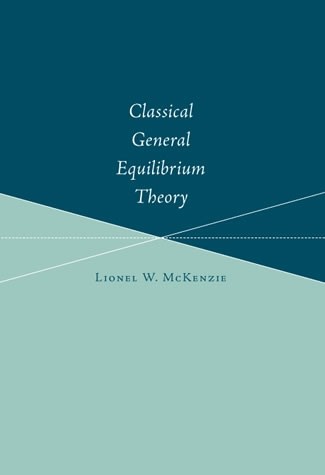Skewness and Kurtosis Statistics
Contents
A histogram plot also indicates the normality of residuals. A bell-shaped curve shows the normal https://1investing.in/ distribution of the series. In order to generate the histogram plot, follow the below procedure.

It also gives us a measure of the combined weight of the tails as compared to the weight of the remaining part of the distribution. If the weight of tails is large, it means the curve will look flatter while if the weight is less, the curve will look like a sharp peak. In a similar manner, one could calculate the potential range of returns for Nifty for any other period, such as for the next 1 session, next 1 week, next 1 quarter, next 1 year etc.
Normality through histogram
A leptokurtic distribution accompanied by negative skewness (left-tailed distribution) implies at a greater risk, because of the higher odds of negative outliers. On the other hand, a leptokurtic distribution accompanied by positive skewness (right-tailed distribution) implies at a higher odds of positive outliers. This sort of distribution is something that would suit an aggressive investor. Meanwhile, for return distributions that are platykurtic (short-tailed distribution), the outliers would be smaller than those found even in normal distribution.
In this case, the mean will be greater than the median, which in turn will be greater than the mode. On the other hand, if the outliers lie below the mean, the distribution will be negatively skewed . In this case, the mean will be less than the median, which in turn will be less than the mode.
The best answer was provided by Vishwadeepak discuss the concept of kurtosis. Choudhary on 27th August 2018.

Knowing the probabilistic range of security returns based on mean and standard deviation can help in making assumptions about the expected future returns of a security as well as in gauging potential risks. Based on one’s risk tolerance, it can also help in stock screening and selection. The normal distribution is found to have a kurtosis of three. A distribution with kurtosis greater than three is leptokurtic and a distribution with kurtosis less than three is platykurtic. When skewness is negative, it means that the data is left skewed. If it is positive, then the data is said to be right skewed, as illustrated below.
Some are asymmetric and skewed to the left or to the right. Another feature to consider when talking about a distribution is the shape of the tails of the distribution on the far left and the far right. Kurtosis is the measure of the thickness or heaviness of the tails of a distribution. Kurtosis is a measure of sharpness of the peak of a distribution.
This article shows two tests; Skewness Kurtosis and Jarque Bera tests because they are simple and popular. In economics, the skewness measure is often used to study income distributions that are skewed to the right or to the left. We are a team of dedicated analysts that have competent experience in data modelling, statistical tests, hypothesis testing, predictive analysis and interpretation.
Kurtosis
In short, a positively skewed distribution will have a tail that stretches to the right, while a negatively skewed distribution will have a tail that stretches to the left. The image below shows distributions that exhibit positive skewness, zero skewness, and negative skewness. Earlier in this chapter, we spoke about skewness and kurtosis, which are the third and the fourth central moment, respectively, in statistics . When observations in the data set are normally distributed about the mean, one can use standard deviation as an effective measure of risk. That said, keep in mind that standard deviation assumes a distribution that is normal.
Finally, click on ‘OK’ to generate the histogram plot showing the normality distribution of the residuals . The time series result will identify the residuals from the regression analysis. The normality test helps to determine how likely it is for a random variable underlying the data set to be normally distributed. There are several normality tests such as the Skewness Kurtosis test, the Jarque Bera test, the Shapiro Wilk test, the Kolmogorov-Smirnov test, and the Chen-Shapiro test.
- Skewness and Kurtosis are measures that quantify such deviation, often referred to as measures for ’shape‘ related parameters.
- Kurtosis is the measure of the thickness or heaviness of the tails of a distribution.
- One of the most important thing that one would like to infer from a descriptive statistics output for any data is how much does the data distribution comply or deviate from a normal distribution.
- Kurtosis is typically measured with respect to the normal distribution.
- When skewness is negative, it means that the data is left skewed.
- Right skewed distributions will have a positive skew while left skewed distributions will have a negative skew.
The tails of these distributions, to both the right and the left, are thick and heavy. Leptokurtic distributions are named by the prefix „lepto“ meaning „skinny.“ A leptokurtic distribution is one that has kurtosis greater than a mesokurtic distribution. Besides normal distributions, binomial distributions for whichp is close to 1/2 are considered to be mesokurtic. If the p-value is lower than the Chi value then the null hypothesis cannot be rejected. After performing the above procedure, ‘sktest – Skewness and kurtosis test for normality’ box will appear .
In order to predict the residuals from the regression model, use the below command. Now that we have a way to calculate kurtosis, we can compare the values obtained rather than shapes. The next article discusses the tests for heteroscedasticity.
When the data is scattered uniformly at the central point, it called as Normal Distribution. Here median, mode and mean are at the same point and the skewness is zero. Kurtosis is typically measured with respect to the normal distribution. A distribution that has tails shaped in roughly the same way as any normal distribution, not just the standard normal distribution, is said to be mesokurtic. The kurtosis of a mesokurtic distribution is neither high nor low, rather it is considered to be a baseline for the two other classifications. Distributions of data and probability distributions are not all the same shape.
skewness based on Moments
Time series data requires some diagnostic tests in order to check the properties of the independent variables. This article explains how to perform a normality test in STATA. Further it is also interesting to know that when we check the data points using the Box plot if the mean of the dataset is greater that the median then its negative skewed and when the mean is less than median then its positive skewed. Data may be distributed either spread out more on left or on the right or uniformly spread. For a normal distribution, the data will be spread uniformly about a central point, and not skewed.

In the next chapter, we will continue our discussion of statistical measures of risk by talking about covariance and correlation. Based on the above table, let us now calculate the possible range of log returns within which Nifty could trade over the next one month. We can find how much the frequency curve is flatter than the normal curve using measure of kurtosis.
Business Mathematics & Statistics – Notes | Study Business Mathematics and Statistics – B Com
When accompanied by low to moderately positive skewness, such distributions would imply at stable returns and low risk. This sort of distribution is something that would suit a conservative investor. For a distribution that is perfectly symmetrical, the mean will be equal to the median and the mode . However, if the distribution is asymmetrical, the mean will be either above or below the median and the mode. If the outliers lie above the mean, the distribution will be positively skewed .
In the negatively skewed distribution the position is reversed, i.e., the excess tail is on the left-hand side. The figure above shows a bell-shaped distribution of the residuals. The X-axis shows the residuals, whereas Y-axis represents the density of the data set. Thus this histogram plot confirms the normality test results from the two tests in this article. The preceding articles showed how to conduct time series analysis in STATA on a range of univariate and multivariate models including ARIMA, VAR and VECM .
You might have heard of the term ‘bell curve’, a curve that resembles the shape of a bell when plotted on a chart. In statistics, bell curve is frequently used to illustrate normal distribution, which is a type of statistical distribution that is symmetrical about its mean. Well, put it in layman terms, it implies the distribution is shaped identically on both sides of its mean – that is, one half of the distribution will fall to the left of the mean, while the other half will fall to the right. The chart below depicts how a normal distribution looks like – resembling a bell-shaped curve that is spaced evenly on either side of the mean (µ), which is represented by the vertical line. In a negatively skewed distribution the value of mode is maximum and that of mean least-the median lies in between the two.